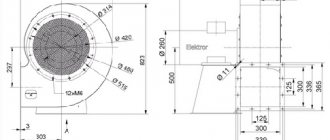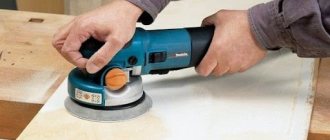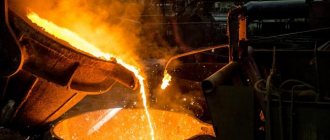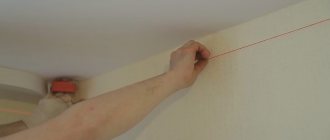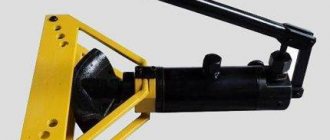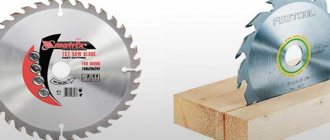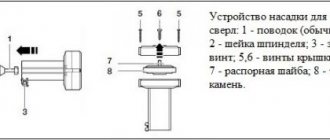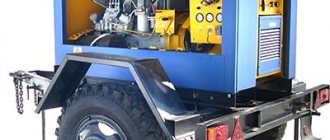The development of human civilization is inextricably linked with technological progress. One of the revolutionary inventions that made it possible to solve many household and industrial problems was electric saws. Lightweight and comfortable, they made it possible to work with a minimum of harmful factors, which makes them truly indispensable for both external and internal work.
In view of the relevance of the issue of choosing such a tool, we will dwell in detail on the variety of designs of electric saws, which differ not only in saw blades, but also in the materials being cut.
Rating table of the best electric saws
The table below shows the TOP 20 best electric saws:
| Place | Model | Product type | average cost | Main feature of the product | Rating |
| 1 | Makita UC4041A 1800 W | electric chain saw | 8,548 rubles | tire 40 cm, automatic lubrication | 10 |
| 2 | PATRIOT ESP 1614 1500 W | 4,999 rubles | tire 30 cm, automatic oil supply | 9 | |
| 3 | Makita UC3541A 1800 W | 8,900 rubles | 35 cm tire, metal teeth to reduce load | 9 | |
| 4 | CHAMPION 120-14 2000 W | 5,490 rubles | 35 cm tire, high engine power | 9 | |
| 5 | Huter ELS-2000P 2000 W | 4,330 rubles | 40 cm tire, brake chain | 9 | |
| 6 | Parma-M6 1000 W | 3,520 rubles | tire 39 cm | 9 | |
| 7 | Huter ELS-2400 2400 W | 4,930 rubles | 45 cm, powerful engine, emergency brake | 9 | |
| 8 | BLACK+DECKER CS1550 1500 W | 5,890 rubles | disc diameter 19 cm, dust removal system | 9 | |
| 9 | CHAMPION 118-14 1800 W | 4,896 rubles | length 35 cm | 9 | |
| 10 | AL-KO EKS 2400/40 2400 W | 9,629 rubles | length 40 cm, protective shield, high vibration speed | 9 | |
| Budget models | |||||
| 1 | Kolner KECS 35/1600 1600 W | chain Saw | 4,480 rubles | length 35 cm | 10 |
| 2 | MAXCUT MCE 164 1600 W | 4,350 rubles | length 35 cm, brake system | 10 | |
| 3 | PATRIOT ESP 1814 2022 1800 W | 4,860 rubles | length 35 cm, strong body | 9 | |
| 4 | EGER PEC-2016-01 2000 W | 5,442 rubles | length 40 cm, powerful engine | 9 | |
| 5 | Carver RSE-15500M 1000 W | 3,516 rubles | length 30 cm | 8 | |
| Expensive electric saws | |||||
| 1 | Husqvarna 420EL 2000 W | chain Saw | 20,490 rubles | brake, powerful engine | 10 |
| 2 | BOSCH AKE 35-19 S 1900 W | chain Saw | 11,449 rubles | steel stop, brake, chain catcher | 10 |
| 3 | Makita UC4050A 2000 W | chain Saw | 13,118 rubles | powerful motor, high rotation speed | 10 |
| 4 | Husqvarna 418EL 1800 W | hand circular saw | 20,277 rubles | high speed circuit, motor protection | 10 |
| 5 | Makita 5008MG, 1800 W | Circular Saw | 23,265 rubles | backlight, laser pointer, cutting adjustment | 10 |
Types of electric and gasoline saws
Gasoline and electric tools have a motor or motor that rotates the tool. Thanks to this, the operator has to put in less effort and the work speed increases. Some versions of the tool are self-contained and suitable for field conditions, others are corded and require a 220 V outlet. Here are the main features of this category of saws.
Chainsaw
The saw operates with an internal combustion engine. Requires gasoline and lubrication of the small cutting part. The tool varies in bar length, which ranges from 35 to 60 inches. This affects the ability to cut a certain diameter of the trunk in one approach from one side.
Device
The cutting element is a chain consisting of links and protruding teeth. It is looped and moves along an oval bus with a guide. The operator holds the unit by the main and auxiliary handles. You can cut horizontally or vertically.
Replacement and tightening of the chain is carried out by a tensioning mechanism on the side. If the working part gets caught in the material, the saw will bounce off. To increase safety, it is equipped with a chain brake that is activated when the plastic safety stop collides with the operator’s hand.
Chainsaw.
Purpose
The presence of exhaust gases allows this type of tool to be used only outdoors. Chainsaws are often used for felling trees and collecting firewood. Thanks to the autonomy of the gasoline engine, they are suitable for long-term use in field conditions.
But the tool is quite universal, so it is used almost everywhere:
- construction of houses and baths from logs;
- cutting firewood in the yard of the cottage;
- cutting down garden trees;
- figured cutting of sculptures from concrete or ice.
Thanks to the powerful engine, the saw copes well with dense materials and withstands heavy loads. But this is an expensive tool that requires proper care.
Electric chain saws
They are similar to gasoline ones in terms of the cutting part and use the same chains. But thanks to an electric rather than a gas engine, they have both their advantages and disadvantages. Within their type, they are divided by tire length and power.
Electric chain saw.
Device
The electric motor is located in front of the main handle and is installed longitudinally or transversely. In the first case, the electric saw has a narrow body, and in the second - with a shorter one. This is worth considering when choosing for use in limited space. All corded chain saws are connected to 220 V. There are 36 V battery versions.
Cordless chain saw.
Electric saws are lighter than chainsaws, so they are less tiring on your hands and are suitable for long-term work throughout the day. They do not emit exhaust gases and are used both indoors and outdoors. Their design is also simpler (only an electric motor, gearbox and equipment), which is why they cost less and repairs are inexpensive.
But the presence of a power cord limits the operator’s maneuverability, and sometimes simply gets in the way (when working at height or frequently walking around a large workpiece). Cordless electric saws are not as powerful and are limited in terms of duration of use by the capacity of the battery.
Purpose
In general, this is a universal tool, but the presence of a power cord allows you to use it only close to an outlet. They are used to cut firewood in the yard, build wooden houses, and cut openings for doors and windows in wooden houses.
Reciprocating saw
It got its name because of its curved cutting element, reminiscent of a saber. Among craftsmen it is also called an electric hacksaw.
Reciprocating saw.
Device
It has an electric motor and gearbox that makes the saw blade move back and forth. Due to such repeated translational movements with high frequency, a cut is made. To protect the operator's hands, there is a stop on the second handle next to the equipment. The main handle is L-shaped or D-shaped. Some models have a step speed switch that helps you set the desired speed for a specific material.
The tool is either corded or cordless. The pros and cons of the type of power supply here are the same as with other saws: a corded one limits mobility and requires an outlet nearby, and versions with a battery remain autonomous only for an hour. For longer use without interruption, you will need a second battery. Then the batteries can be alternated, changing them in the tool and charging them in the base.
Cordless reciprocating saw.
Purpose
The main feature of a reciprocating saw is its compactness and light weight. Thanks to this, it is used at heights or in hard-to-reach places where it is inconvenient to operate a chain saw or a hand-held circular saw.
For example, it is well suited for roofing work. The model cuts not only wood. Special replaceable blades allow you to cut stone, concrete, and metal. There are saw blades that can be used to make neat cuts in combined materials.
Saw alligator
It is a type of reciprocating saw but is intended for larger objects and workpieces. It got its name due to the use of two toothed blades, similar to the double dentition of an alligator. The tool can be battery-powered or corded. The first type is much more expensive.
The alligator saw.
Cordless alligator saw.
Device
It has handles on the motor block and a long guide. Two blades move along the bottom of the tire in opposite directions. The stroke length can be up to 40 mm. This ensures an even cut and minimizes the cutting line moving to the side. When the blade becomes dull, it is replaced with a new one.
Purpose
Most often, the alligator saw is used for cutting aerated concrete and building blocks of similar structure and density. It is lightweight and suitable for sawing bricks perpendicularly or diagonally. But two blades in the composition increase the thickness of the cut, which is important to take into account when calculating the size of materials.
Circular (circular) hand saw
It is held with one hand and can be used for cuts in the downward and vertical positions. It is called disc because of the rotation of the disk as the main cutting element. Thanks to this design, it is compact. There are versions powered by 220 V mains and battery-powered 36 V.
A circular saw.
Cordless circular saw.
Device
It consists of a D-shaped single handle, a transverse motor, to the shaft of which a steel disk with teeth is attached. Rotation of the working part at high speed ensures fast cutting of wood. The circular saw blade is protected by a sliding casing that automatically closes the teeth after the saw is removed from the board. The cutting depth depends on the diameter of the disc and can reach 50-60 mm.
Some models are capable of tilting the blade at an angle to make a bevel cut.
Purpose
The circular saw is used for longitudinal and transverse cutting of boards, beams, etc. Due to its low weight and size, it is convenient for working at heights, for example, trimming pediment boards, frames, rafters, etc.
Circular machines (sawing)
It has a similar cutting element as a hand-held circular saw, but is installed on the floor or table. The user, instead of a tool, holds the workpiece itself in his hands, feeding it at the desired angle to the disk. This simplifies the processing of large parts, but this technique is not used at heights. All types of sawing machines are networked.
Device
All circular saws have a motor and a drive (belt) that transmits torque. There must be a support platform with a slot from which the cutting disc looks out.
Structurally, there are three options for the types of circular saw:
1. Tabletop - has short legs and is installed on a workbench or durable table. The weight of the machine is within 20 kg, so after work it can be put away on a rack or other convenient place. A small disk allows you to cut material with a thickness of 40-80 mm.
Tabletop circular saw.
2. Circular sawing machine with stand - equipped with a table extension, on which it is convenient to place boards or timber with a length of 2-3 m. This ensures an even cut and relieves the operator, because he does not need to hold the weight of the workpiece with his hands.
Circular saw with stand.
There are versions with folding legs, so the machine is suitable for easy transport to the workplace. Depending on the diameter of the disc, the cutting depth is possible up to 80-90 mm.
3. Stationary circular saws - designed for operation in one place, since they weigh 40-50 kg. The heavy bed ensures a stable position even when processing large workpieces. It can be equipped with large discs that cut depths from 70 to 125 mm.
Stationary circular machine.
Purpose
Using circular machines, wide boards and beams are unraveled.
Straight transverse and oblique cuts are possible. Small desktop versions are optimal for working in the garage. Machines with stands are suitable for field activities in order to prepare all the wooden parts on site, rather than transporting them to the workshop. Stationary machines are in demand in enterprises and furniture factories.
Miter saw
It got its name from its ability to cut only ends and perform cross cuts. The material is not used for longitudinal dissolution.
Miter saw.
Device
Consists of a base and a lowering disk with teeth. The electric motor is located on top and transmits torque directly to the saw element. There are no belts or chains in the mechanism. The top of the disk is covered with a metal casing. Lowering is carried out on a bracket with a hinge, and the operator holds on to the handle.
The base of the machine has a stop for placing workpieces and securely fixing them. This promotes cutting accuracy. Some types of miter saws are capable of tilting the cutting blade to the left or right relative to the table to produce a miter cut. The mechanism provides for a tilt of up to 45-55 degrees.
One type of these saws is the broach miter saw. The saw blade of such a tool is mounted on special guides and can move horizontally. This design allows you to cut and trim fairly wide workpieces.
Miter saw with broach.
The saw is installed on a table or workbench. The weight of 10-30 kg makes it easy to rearrange it, put it away for storage and transport it to another place of work.
Purpose
The main area of application for trimming is woodworking. With its help, timber and boards are cut to size for subsequent assembly. Miter saws are designed for miter joining parts. If you replace the disk, then using the device you can cut aluminum, plastic and other non-ferrous metals. The machines are used in framing workshops and furniture production.
Cut-off (mounting) saw
As the name suggests, it is designed for quickly making cuts on parts during installation. Essentially, it is a small cutting machine that sits on a table or even on the floor.
Device
Structurally, the saw is similar to a miter saw: there is a bracket on a hinge, a motor on the axis of which the saw blade is mounted, and a base. The machine is located on the table. Weighs 10-15 kg and can be easily moved from place to place by one person.
The difference from a miter saw is the design of the cutting disc. Here an abrasive wheel is used (similar to wheels for angle grinders, only with a larger diameter and thickness) or a steel disk with teeth and pobeditovy tipped.
The base is equipped with a vice for fixing workpieces. To prevent sparks and abrasives from flying into your eyes, a transparent protective screen is provided. Rotating the vice and tilting the wheel expands the cutting line options.
Assembly saw.
Purpose
The assembly saw is used on construction sites for quick cutting of workpieces. The abrasive wheel allows you to work with metal with a thickness of 1-30 mm. The tool is also used in production for the serial production of parts for welding. It is used to cut: profile and round pipes, fittings, rods.
Stationary band saw
It got its name because of the cutting element in the form of a moving saw blade.
Device
Vertical machine with electric motor and roller system. One node is located at the top of the device, and the other at the bottom. Between them there is a frame with a slot on which the workpiece is located. The cutting depth depends on the height of the workplace between the two rollers and the table, but even for the largest stationary machines this figure does not exceed several tens of centimeters.
Stationary band saw.
Purpose
A stationary band saw is used for straight and curved cuts in wood, metal, and plastic. A thin saw blade allows you to cut figuredly and make cuts with complex configurations. This is in demand for decorative elements or when creating special structural blanks.
Band saw
It also uses a saw blade, only the tool is small and convenient for transportation. There are two types of shape.
Device
The portable tabletop version has a rectangular base and the working part with rollers, belt and motor is lowered by pressing the handle. This saw can be easily placed on the table for convenient manipulation of workpieces. The parts are fixed using a vice built into the base.
Portable band table saw.
The hand-held band saw is made without a base - there are two handles above the rounded edges of the body with rollers. The operator holds the tool suspended, and the part to be cut is placed on the table, floor, or clamped with additional vices or clamps. Carrying the device is even easier.
Hand band saw.
Purpose
Band saws are used by welders and plumbers to make complex cuts where a grinder or other tool is not suitable. With its help, work is carried out on metal, plastic and wood. But the compactness affected the maximum possible size in height of the installed workpiece - often it does not exceed 10 cm.
Combination saw
It is called so because of the possibility of combining two cutting methods. They cannot be carried out at the same time - only one by one. This became possible thanks to the complex design.
Combination saw.
Device
The saw has a base and a hinged bracket. An electric motor and a working disk are attached to the latter. Lowering the rotating wheel helps you make cross cuts quickly - here the saw acts like a miter saw.
An example of using a combination saw as a miter saw.
If the moving part is lowered all the way and fixed, the disk will look out from above (on the back side) and the saw turns into a circular saw. It will allow you to spread boards and beams lengthwise, as well as make cuts at different angles.
An example of using a combination saw as a circular saw.
Purpose
Thanks to the combined cutting methods, the saw is in demand both for trimming boards and timber to size, as well as for preliminary unraveling of wood and reducing the width of the board. But the cost of the equipment is high, so it is used only in professional activities.
Radial console saw
It is called so because of its special shape with radial rotation of the bracket and movement of the cutting part along the console. This is a complex type of equipment for woodworking production.
Device
The machine has an L-shaped bracket mounted on a rectangular base. The stand rotates left and right. A metal disc with teeth is used for cutting. It receives torque from the engine, being directly mounted on the armature shaft.
The saw part moves back and forth under the console, which allows you to make long cuts. Some models are capable of tilting the blade to cut an edge. The cutting depth depends on the diameter of the disk and can be 20-50 mm.
Radial console saw.
Purpose
The movement of the saw blade along the console allows you to make long cuts in sheet material. This is relevant for preliminary cutting of chipboard, MDF, and laminated chipboard sheets. The saw is also suitable for square and rectangular cuts in large panels, since the cutting part has a submersible action and it is not necessary to start the blade from the edge of the material.
Jigsaw
Like a regular jigsaw, it works with a thin toothed blade, only the latter moves due to a gearbox and an electric motor.
Jigsaw.
Device
It has a D-shaped handle, a motor and a metal sole. Suitable for working in downward and vertical positions. The file is submersible and moves up and down in amplitude thanks to a pendulum mechanism.
The jigsaw has a speed controller to select the optimal speed for different materials. The housing has built-in vibration dampers and a bar that protects surrounding objects from accidental contact with the saw blade. Jigsaws can be corded or battery-powered.
Cordless jigsaw.
Purpose
The tool is suitable for straight and curved cuts, cutting out complex shapes. The cut starts from the edge. To cut shapes inside the material, you will need to pre-drill a hole to insert the cutting blade. Used by woodworkers and cabinet manufacturers, kitchen installers.
Jigsaw machine
The machine has a thin saw blade that tightly performs reciprocating movements. The master does not hold a jigsaw in his hands, but a wooden blank and, turning it, makes the necessary cuts.
Device
The device has a base with a supporting surface. There is a hole in the center through which the saw blade moves. The G-shaped frame with a long reach allows for internal cuts in large wood panels.
Since the tool is not supported by weight, but firmly mounted on the table, the cut is cleaner and smoother. Suitable for making critical products. For control, there are start and stop buttons, as well as a speed controller.
Jigsaw machine.
In some versions of the machine, the lower base can be tilted and there is a scale with degrees, so you can cut the edge without preliminary marking exactly at a given angle. Depending on the configuration, the jigsaw can be connected to a construction vacuum cleaner; there is illumination of the work area and air flow to keep the marking lines clean.
Purpose
Curly cutting of complex shapes in sheet materials, boards, production of decorative elements. Used in the production of furniture and wooden doors.
How to choose a power saw?
Electric saws differ in engine power, bar length and the availability of additional options. Household saws have a power of 1 to 2 kW and a weight of 4-5 kg. Continuous operation with such a tool is possible for 10-15 minutes.
When choosing a power saw, you evaluate:
- engine power and tire length;
- weight of the unit and its safety system;
- load duration;
- anti-vibration system;
- chain reliability.
For longer operation, choose models with a power of 2-2.5 kW. A longer splint (more than 40 cm) may be needed. For example, small electric saws are not suitable for working with large trees.
The saw must have protection against accidental pressing and an automatic brake system. Operation should stop immediately when the start key is released. Chain lubrication is mandatory when using the tool. The kit should include a protective cover and tools.
Characteristics
The main task of this type of tool is cutting wood and wood processing materials. For this purpose, hand-held electric saws are used, the design of which is based on an electric motor, gearbox, working element and safety devices.
Electric saws can be either universal or highly specialized. This primarily depends on the power of the electric motor and the design of the working element. Hand chainsaws are considered the main universal tool for carpentry, firewood, and gardening. To work with lumber in the form of boards or particle boards, circular and reciprocating saws and jigsaws are used. For small carpentry work, reciprocating saws and a jigsaw are usually used.
An important point in selecting an electric saw is the ability to customize it for specific types of tasks and the ability to change the working tool. For specific work, for example, to process an unedged board, special types of circular saws are used that are capable of making fast and even longitudinal cuts. Depending on the thickness of the board and the setting of the electric saw, the depth of cut is set in a circular saw, and the blade for a transverse, longitudinal or thin, groove cut is set in a reciprocating saw.
It is generally accepted that saws with a more powerful engine - more than 2 kW - are professional, and those with a power less than 2 kW belong to the household category.
Summary
Choose electric saws based on engine power. If a tool is required for pruning trees, choose a guide bar that is light in weight and short in length. Models with a power of 2,000-2,800 W, made of hard materials, are suitable for tree felling in the forest.
What kind of electric saw do you have?
Budget model
100%
Dear model
0%
Voted: 1
For example, you can pay attention to the brands Makita, Patriot, Eger, Carver and many others. In terms of design, modern options and functionality, Bosch and Husqvarna models stand out. High-power Champion models are also suitable for serious work.
0
0
Copy link
Types of hand saws
Hand tools weigh little, do not require electricity or fuel, are relatively cheap, and have a long service life. But the speed of work depends on the user’s physical fitness. Types of hand saws are divided into universal ones, which are suitable for general purposes, and highly specialized ones, designed for specific processes. Let's take a closer look at them.
Standard saw
Belongs to the classic type. Can be purchased at any hardware store.
Device
It has a high steel blade with teeth, gradually tapering towards the end. The teeth need to be sharpened and set periodically, otherwise the saw will bite into the material. The D-shaped handle was previously made of wood, but is now made of plastic. More expensive versions may have a two-piece handle that is better at resisting slippage.
Hacksaw.
Purpose
Suitable for straight cuts of boards, timber, branches, laminate, MDF, chipboard and other wood materials with a thickness of 2-100 mm. Due to the flexible structure of the blade, which does not have a rigid frame, the cutting line easily moves to the side, so a standard saw is applicable only where strict adherence to dimensional accuracy is not required.
Bow saw
It got its name because of the arc shape of the frame and the tension of the canvas, like the string of a bow.
Device
The U-shaped frame is made of a round steel tube. The ends are provided with a hook-shaped threaded fastening. Using the thumbscrew, the screw is tightened, and the short blade with teeth becomes rigid. There is a rubber-coated handle on one side. When the teeth are ground down, the blade is replaced with a new one. In this, a bow saw has a significant advantage over a standard one.
But when cutting a tall workpiece, there may not be enough depth, since the product will rest against the tool frame. Some manufacturers produce saws with a swivel mount so that the jumper remains on the side and not on top.
Bow saw.
Purpose
Most often, a bow saw is used for sawing metal. This includes profile and round tubes, thresholds for fixing floor coverings, small brackets, etc. But changing the equipment to a blade with higher teeth allows you to saw wooden and plastic blanks.
Garden saw
It is small in size and designed specifically for gardening. Suitable for men and women as it is lightweight and easy to use.
Device
The structure consists of a steel sheet with a height of 40-30 mm. There are teeth at the bottom, and the shape of the saw part is slightly curved in an arc for better cutting into wood. The handle is often L-shaped and molded from plastic. There may be a hole at the end for hanging the tool. The saw blade is not replaceable and requires periodic sharpening and re-wiring.
Garden saw.
Purpose
Using a garden saw, they trim branches, twigs, and shoots on garden trees. You can even cut down a young tree or shrub. But it is not suitable for serious and precise tasks.
Jigsaw
Designed for shape cutting. But working with it is more painstaking and time-consuming than with a jigsaw.
Device
The jigsaw has a U-shaped frame, at the ends of which a cutting blade is attached. This can be a narrow file or a rod with an applied abrasive. The handle on the side is designed to be held with one hand. The large reach allows you to work with wide materials.
Hand jigsaw.
Purpose
A hand jigsaw is used to cut foam, plywood, chipboard, and plastic. Suitable for filing small pieces when there is nothing more suitable at hand. You can perform longitudinal and cross cuts, as well as go along any curved lines. The main purpose is curly cutting in small volumes. Ideal for the DIYer.
Passing saw
A highly specialized tool for precision work.
Device
The pass saw consists of a tall blade and small teeth on one side. Due to the large steel strip with reinforcement on the part opposite to the cutters, it is very rigid and does not bend during the cutting process. Early versions were equipped with a round wooden handle. With a short length they were called passing knives. Longer modern models have a D-shaped handle positioned at a 45-degree angle.
Passing hand saw.
Purpose
Due to the fine teeth and lack of setting, as well as the rigid design, pass saws provide precise and thin cuts. Suitable for fine cutting of wood, soft metals (aluminum, copper), plastic, chipboard. Popular with laminate floor installers and kitchen installers.
Grooving saw
High precision tool for cutting short grooves.
Device
The design is similar to pass saws, only much smaller. A thick rectangular blade with fine teeth is used. The thickening on the upper rib provides rigidity. The handle can be on the side or in the middle of the top butt. The rubber pad on the handle prevents slipping.
Grooving saw.
Purpose
Used for precision cutting of grooves in wood and soft metal. This could be cutting out a groove for a cable or gas hose in a kitchen countertop, cutting an aluminum table edge, or other critical cuts. The saw is not suitable for thick materials over 30 mm. Used only by professional carpenters.
Narrow (circular) saw
Hacksaw for specific tasks with circular cutting. It got its name because of its ability to bend while sawing the workpiece.
Device
A circular saw consists of a saw blade that tapers greatly towards the end. And in the widest part, the hacksaw is also not very large. The work is carried out with one hand. The L-shaped handle with rubber pads promotes a secure grip. There are types with a straight two-component handle.
Circular saw.
Purpose
A hacksaw is used for cutting circular and oval holes in wood and plastic. Due to its narrow shape, the blade can be easily tilted to the side and the cutting line can be rounded. Models with rectangular cutting blades break or bend under such pressure, but here everything is fine.
Plywood saw
Designed specifically for sawing plywood.
Device
The plywood saw is notable for its tall, permanent steel blade and D-shaped handle positioned at a 45-degree angle. Fine teeth without setting contribute to fine cuts and high precision. The large area of the steel sheet prevents deformation of the equipment and the line moving to the side. The end of the saw is rounded.
Plywood saw.
Purpose
Makes straight cuts on plywood without painting the edges or breaking off the edges. Provides dimensional accuracy and minimal waste, which reduces cutting errors. Not suitable for curly cutting.
Folding mini saw
The smallest type of hand saw, which is why it got its name.
Device
The design resembles a folding knife. There is a handle and a saw blade on a hinge. Instead of a blade, the lower edge has slightly set teeth. The end of the handle often has a hole for a lanyard to hang the instrument or wear on the wrist. Non-folding versions are available.
Mini saw.
Purpose
It is convenient to carry a mini-saw with you for camping needs: cutting off an interfering branch, cutting slingshots for hanging a pot on a crossbar, creating a hut, preparing firewood for a fire. They are also convenient to use in hard-to-reach places where a standard hacksaw cannot reach.
Two-handed saw
In common parlance it is called “FRIENDSHIP”, since it requires two people and coordinated actions to use. Use by one person is difficult and not justified in terms of time and results.
Device
A two-handed saw has a tall blade with large teeth. The length of the cutting part is a meter or more. The ends are provided with I- or D-shaped handles. The cut is carried out by alternately pulling the handle towards you. It is considered the largest hand-held non-electric tool.
The saw is two-handed.
Purpose
Designed for sawing tree trunks and large logs, felling forests in conditions where there is no electricity or fuel. For small boards and timber, it is better to choose smaller saws.
Japanese saw
The name of the instrument indicates the birthplace of the invention. It has a specific shape and is suitable for neat jewelry cuts.
Device
The canvas can be rectangular, but more often it is made in the shape of a trapezoid (resembles a long spatula). Sharpening with teeth is provided on one or two longitudinal sides. With a double-sided working part, the tooth pitch is different. The handle is straight or slightly turned down. The teeth are bent in one direction, which provides precise control of the cutting line. Cutting the wood fibers occurs when the user pulls the Japanese hacksaw towards himself.
Japanese saw.
Types of paintings
Electric hacksaw blades are divided depending not only on the length, but also on the shape, size and number of teeth, as well as the pitch between the teeth.
Thus, the following types of reciprocating hacksaws are distinguished:
- on wood;
- for metal;
- on stone.
However, this does not mean that only these materials can be cut; a hacksaw is also used for aerated concrete, foam concrete, drywall and other materials.
Basically, when purchasing an electric hacksaw, several blades are included in the kit.
Principle of operation
Common to all types of hand-held electric saws for wood is the principle of wood processing - cutting fibers using metal cutting teeth. This principle applies to both hand and gasoline saws. The difference is in how the working parts of electric saws are arranged, how the teeth are secured and what shape they have.
The working parts of electric saws - the teeth of circular saws, hacksaw blades or reciprocating saws - are most often wedge-shaped or trapezoidal in shape, can be flat or complex in shape, and have one or more cutting edges.
Modern technologies for manufacturing electric saws make it possible to use special alloys and high-carbon steel grades for the production of saws, which make it possible to increase the service life of the tool and increase its productivity.
By design, the working bodies can be:
- With a disk working body;
- In the form of a saw blade, single or double-sided;
- In the form of a saw chain mounted on a special bar.
Circular saws usually have triangular, wedge-shaped and trapezoidal teeth of complex shape. On the working surface, one or two cutting edges are sharpened with teeth set. The operating principle of this electric saw is to cut wood fibers by rotating the disk around its center. The teeth alternately bite into the wood, removing part of the fibers with the cutting edge of the tooth.
Reciprocating saws use a reciprocating movement of the working body. Depending on the saw setting, the movement can be either 3 cm or 5 mm. To use a reciprocating saw, saws are selected that differ in their purpose and are used:
- for working with wood:
- for cutting plastic and particle boards;
- used for working with aluminum or thin sheet metal.
Chain saws are a closed flat chain with teeth of complex shape; it is driven by a chain drive gear from the saw motor. The saw chain moves endlessly along the guide bar. The cutting is carried out by teeth located in the form of linings on the chain on the right and left sides of the chain. For this type of power tool, chains are selected not depending on the direction of cutting the wood fibers, but depending on its strength.
The main advantages of a jigsaw
It is often called a pendulum electric saw. The main area of application is longitudinal, shaped and transverse cutting of sheet materials. The depth to which the cutter penetrates varies in the area of 6-10 cm. For steel, this parameter is 4-6 mm. Using a jigsaw, you can cut laminate, boards, loose metal, and pipes. It also allows you to make a hole of any diameter in the workpiece.
The jigsaw performs its functions using reciprocating movements. The frequency depends on the set of characteristics and can range from 500 to 3000 strokes/min. Many jigsaws are equipped with a pendulum mechanism for blade movement, which is in addition to the reciprocating one. Their operating speed is higher, and the operating period of the cutting element is longer.
The cutting angle is considered one of the most important parameters of a jigsaw. This determines how widespread its application is and whether it can reach hard-to-reach places. Most models have a 45 degree cutting angle.
Cons of an electric hacksaw
Let's move on to the disadvantages of reciprocating saws. Let us immediately note that most of the criticism against them is fair. The main thing is to understand what kind of work the tool is best suited for.
- Low accuracy - this is noted by everyone who has ever worked with a reciprocating saw. Indeed, first of all, the tool is intended for rough work and it most likely will not be able to cut out fine patterns. However, when harvesting firewood, dismantling structures and carpentry work, cutting accuracy is not so important.
- Low productivity - when compared with a chain saw, circular saw or grinder - then yes, a reciprocating saw is inferior to them in speed. But if you purchased a “saber” to replace a hand hacksaw, the savings in effort and time are obvious. In addition, many models have a pendulum stroke - additional swinging of the canvas up and down. In this mode, the sawing speed increases.
- Vibration is a fairly significant drawback that manufacturers are trying to eliminate. If you are going to regularly work with a reciprocating hacksaw for at least half an hour a day, be sure to make sure that the model you choose has an anti-vibration system. Strong vibrations quickly cause fatigue, and are not very beneficial for health.
A reciprocating saw is a tool that is both universal and highly specialized. On the one hand, they can work on a variety of materials. And also perform a wide range of work: from preparing firewood and sawing grooves in logs to trimming branches.
On the other hand, for almost each of these jobs there is an alternative in the form of a more productive tool: a chain saw, jigsaw or grinder. In this case, “Sabre” has few tasks left: trimming pipes, fittings, dismantling structures. It’s not for nothing that this hacksaw is called a demolition tool. What are the advantages? It is maneuverable, safe and compact. Can replace several different tools. If you have a dacha, your own house, or are doing construction on your own, then you will certainly appreciate the advantages of a reciprocating hacksaw.
Saber device
The operating principle is simple and borrowed from a jigsaw. The blade moves back and forth with a small amplitude (10-28 mm). It is usually fixed in the holder without a key. What’s captivating is that you don’t need to delve into the instructions for a long time to get started—everything is intuitively clear as it is. The body of the hacksaw is oblong, the handle is pistol-type with a power button located on it. Power can be supplied either from the mains or from a battery. The “saber” is held with two hands; a light model can be held with one hand. Let me draw your attention to the last circumstance - it is this that allows you to work with a hacksaw in hard-to-reach places, cut holes for ventilation or sewer pipes, adjust and trim boards in place.
Additional functions
Modern electric chain saws are equipped with electronic and mechanical safety systems for the operator and the mechanism itself. Some options are not available on all models.
overheat protection
An electronic device turns off the electric motor at critical overloads. With such a device, the engine will not smoke or burn out if, for example, the chain is caught in a cut or the engine overheats. Useful feature. But on budget models it may have its drawback - frequent shutdowns even under normal loads. On quality saws such “excessive vigilance” does not occur.
Safety
All electric chain saws, without exception, are equipped with basic safety systems. This is primarily a brake that stops the chain even if the engine is turned on. Until the operator turns it off, the chain will not spin. The brake is turned on and off with a protective handle, which simultaneously blocks the space between the hands and the chain.
Adjusting chain tension
It is impossible to use this tool without adjusting the tension, therefore the function is present on all models without exception. The principle of adjustment is the same everywhere.
The design solution may differ - loosening the cover and tightening it with or without a wrench, with a built-in regulator. The regulator is more convenient, no additional key is needed. The plastic regulator cap of quality brands is reliable. Not always with budget ones, so for them tightening with a wrench is easier and more reliable.
In general, the design of the chain tensioning system is not a decisive criterion when choosing a model. More important is the strength of threads and metals. When purchasing, it is impossible to visually evaluate this moment. Only indirectly, by brand reputation.
Smooth start
With this function, the chain does not gain momentum immediately, but smoothly. The system protects the electrical network from overloads when starting the electric motor. Plus, during a soft start there is time to correctly route the chain, which increases safety. The disadvantage of a soft start is that it takes several seconds until the engine reaches full speed. For those who are used to normal starting, this may be annoying at first.
